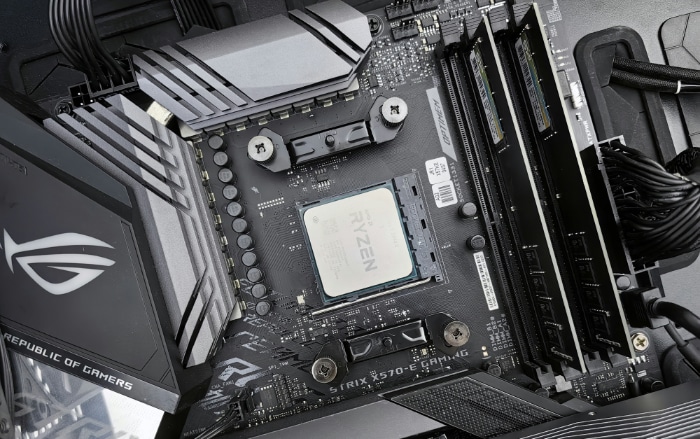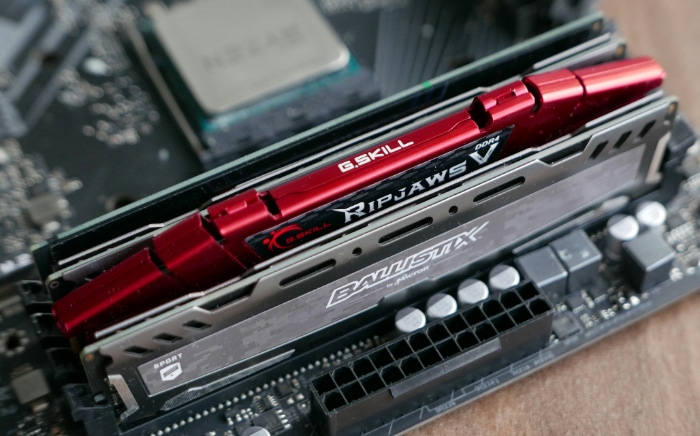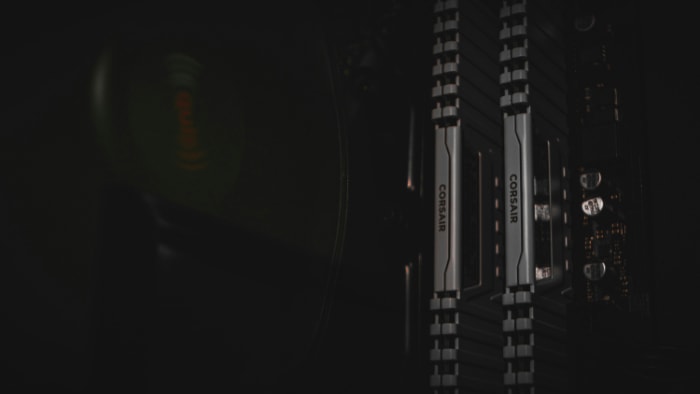Is DDR3 RAM Still Good in 2024? The Surprising Truth

Random Access Memory (RAM) stands as one of the crucial components that dictate the speed and efficiency of computers. Over the years, advancements in RAM technology have led to the development of several generations, each surpassing its predecessor in terms of performance and capabilities.
Among these, DDR3 RAM, once the forefront of technology, provided a significant leap forward from its predecessor, DDR2, offering faster speeds, greater bandwidth, and more efficient power consumption. Now, as we move through 2024, the relevance of DDR3 RAM is reconsidered in the context of newer generations like DDR4 and DDR5.
DDR3 RAM Specifications
When talking about the specifications of DDR3 RAM, we’re essentially discussing what makes it tick – its speed, how much data it can handle at once, and how much it can store temporarily. These specifications are crucial for understanding how DDR3 RAM supports your computer’s performance and how it compares to more recent generations.
Speed and Bandwidth: The Essentials
DDR3 RAM speeds typically range from 800 MHz to 2133 MHz. This speed, measured in megahertz (MHz), indicates how many millions of data transfers can occur per second.
Bandwidth, on the other hand, refers to the amount of data that can be transferred at once, measured in gigabytes per second (GB/s). DDR3’s bandwidth starts at about 6.4 GB/s and can go up to nearly 17 GB/s.
The combination of speed and bandwidth in DDR3 was a significant step up from DDR2, allowing computers to process more tasks simultaneously without bogging down.
Capacity Options for Various Needs
DDR3 RAM modules are available in a range of capacities, from small 1GB sticks suitable for basic computing needs up to 16GB modules for more demanding tasks. This flexibility allows users to tailor their system’s RAM to their specific requirements, whether it’s for general use, gaming, or professional applications involving heavy multitasking and data-intensive programs.
How DDR3 Stacks Up Against DDR4 and DDR5
When comparing DDR3 with its successors, DDR4 and DDR5, several key advancements stand out. Each generation was designed to meet the increasing demands of modern technology, improving on speed, bandwidth, capacity, and power efficiency.
Advancements in DDR4
DDR4 RAM made considerable leaps in performance and efficiency. With speeds starting at 2133 MHz and going up to 3200 MHz or even higher, DDR4 significantly outpaces DDR3 in data transfer rates.
Bandwidth also sees a boost, with figures starting around 17 GB/s and scaling up, offering improved system responsiveness and handling of memory-intensive applications. Moreover, DDR4 operates at a lower voltage than DDR3, enhancing energy efficiency and thermal performance.
The Leap to DDR5
DDR5 takes things to another level, doubling the data rates seen in DDR4, with speeds that can exceed 4800 MHz right from the start. This increased speed translates into even greater bandwidth, allowing for smoother multitasking and performance in high-end computing tasks.
DDR5 also introduces improvements in power management and efficiency, along with increased capacity options, making it well-suited for future computing demands.
DDR3 RAM’s Compatibility and Use in 2024

As technology progresses, compatibility between different generations of hardware becomes a crucial consideration. DDR3 RAM, once the benchmark for speed and efficiency in computers, now faces challenges aligning with the latest motherboards and processors.
However, its usage today isn’t entirely out of the picture, with specific applications and systems still relying on this generation of memory.
Compatibility Challenges with Modern Hardware
Modern motherboards and processors are primarily designed to support DDR4 and DDR5 RAM, incorporating advancements that are incompatible with DDR3’s architecture. This mismatch arises from differences in pin configuration, voltage requirements, and signaling technology.
For instance, DDR3 modules cannot be physically inserted into DDR4 or DDR5 slots due to a different notch placement, preventing incorrect installation. Moreover, the lower voltage and higher speed requirements of newer RAM generations mean that even if DDR3 could fit, it wouldn’t operate correctly or efficiently.
This scenario necessitates a careful hardware selection for those looking to upgrade or build new systems, ensuring all components are mutually compatible.
Where DDR3 Still Finds Its Place
Despite these compatibility issues, DDR3 RAM remains relevant in several contexts. Older but still functional computers, which don’t require the cutting-edge performance of DDR4 or DDR5, can continue to operate efficiently with DDR3.
This includes office computers, home systems used for web browsing and light productivity tasks, and some specialized industrial or commercial equipment that doesn’t demand high-speed memory. Additionally, DDR3 is more affordable, making it an attractive option for budget builds or refurbishing older machines.
DDR3’s Niche in Specific Sectors
In certain sectors, the transition to newer RAM generations isn’t as rapid. Educational institutions, for example, with computer labs full of DDR3-based systems, might not have the immediate budget or need to upgrade to DDR4 or DDR5.
In these scenarios, DDR3 serves adequately, providing sufficient performance for educational software and internet research. Similarly, in developing countries or regions where the latest technology isn’t readily accessible or economically feasible, DDR3-based systems are valuable for bridging the digital divide, offering a balance between cost and capability.
DDR3 RAM Performance in Modern Computing
DDR3 RAM was designed for efficiency and speed within the technological context of its time. For everyday computing tasks—like browsing the internet, streaming video content, and managing office documents—DDR3 is still quite capable.
These activities don’t typically push the boundaries of what DDR3 can handle, allowing it to serve adequately under such workloads. However, as software and applications evolve, demanding more from the system’s RAM, the older DDR3 technology might not keep pace as seamlessly as its newer counterparts.
Gaming with DDR3
Gaming is a field where the advancements in RAM technology are palpably beneficial. Modern games, with their detailed graphics and complex mechanics, can demand a lot from a system’s memory.
While DDR3 can support gaming, especially for titles released during its prime, newer, more demanding games may not run as smoothly. This is not to say that gaming is off the table with DDR3, but for an optimal experience, newer RAM generations offer improvements in handling game data and textures.
Professional Software and DDR3
For professional software used in video editing, graphic design, and engineering simulations, the story is somewhat similar. DDR3 RAM can support these applications to a certain extent.
However, tasks that involve processing large datasets or high-resolution media files benefit from the higher speeds and bandwidth of DDR4 and DDR5. Projects can be completed more swiftly, and software runs more smoothly, with reduced loading and processing times, thanks to the advancements in newer RAM technologies.
General Computing and Multitasking
In the realm of general computing and multitasking, DDR3 RAM still holds its own for users with moderate needs. Running multiple applications simultaneously, such as word processors, web browsers, and email clients, can be adequately managed by DDR3.
Yet, as the volume of open tasks increases or the complexity of those tasks grows (for example, multiple high-definition video streams or dozens of browser tabs), the limitations of DDR3 may become more noticeable. DDR4 and DDR5, with their higher data transfer rates and efficiency, provide a smoother multitasking experience in these scenarios.
While DDR3 RAM remains functional for a broad spectrum of computing activities in 2024, the benefits of upgrading to DDR4 or DDR5 are clear for users whose tasks stretch the capabilities of their systems. These newer generations of RAM offer enhanced performance that can significantly impact the efficiency and enjoyment of both work and play, marking a step forward in meeting the demands of modern computing environments.
Weighing the Costs and Benefits of DDR3 RAM

Making a decision on whether to stick with DDR3 RAM or upgrade to a newer generation involves more than just comparing performance. The financial implications, including both the cost of acquisition and potential benefits in terms of system performance, play a crucial role.
Price Comparison Between RAM Generations
Initially, newer technologies like DDR4 and DDR5 tend to be more expensive due to their enhanced capabilities and the cost of innovation. However, as they become standard and production scales up, prices usually decrease.
DDR3, being older, often has lower prices due to its widespread availability in the used market. Yet, new DDR3 modules might see a price increase due to dwindling supplies as manufacturers focus on producing newer generations.
This makes DDR3 an attractive option for those looking to extend the life of existing systems without the need for cutting-edge performance.
Availability of DDR3 and Its Economic Impact
As the tech world moves forward, DDR3 RAM becomes less common in the production lines, leading to decreased availability. This scarcity can sometimes lead to price increases for new DDR3 RAM modules, making them less cost-effective than newer generations that benefit from mass production.
Additionally, the used market for DDR3 remains robust, offering a more affordable route for upgrades or replacements, albeit with the risks associated with pre-owned hardware.
Upgrade Costs Versus Performance Gains
When considering an upgrade from DDR3 to DDR4 or DDR5, it’s not just about purchasing new RAM. Often, it requires a new motherboard and potentially a new CPU that are compatible with the newer RAM technology.
This can lead to a significant investment, beyond just the cost of the RAM itself.
For those using their computers for basic tasks, the performance benefits of upgrading might not justify the cost. However, for users involved in more demanding activities like gaming, video editing, or data analysis, the improved performance could significantly enhance productivity and user experience.
It’s a balancing act between current needs, future-proofing, and budget constraints.
In 2024, deciding on whether to stay with DDR3 or move to newer RAM technologies is a nuanced choice. It involves considering not only the immediate cost but also the long-term benefits.
For some, the smart move might be to maximize their current system’s lifespan with DDR3. For others, investing in DDR4 or DDR5 could offer the performance necessary to meet their computing needs, making it a worthy upgrade despite the higher upfront cost.
Conclusion
Tracing the growth of DDR3 RAM through 2024 reveals its standing as a technology that has gracefully aged but is undeniably being outpaced by newer generations. This memory type still holds a place in setups where cutting-edge performance isn’t a critical requirement, proving itself to be more than adequate for basic computing tasks, and serving as a cost-effective option for systems not pushing the boundaries of modern software demands.
People still relying on DDR3 RAM are typically those with systems that were built when DDR3 was in its prime, or those who seek to extend the life of their existing hardware without the financial outlay required for a complete system overhaul. Educational institutions, businesses with straightforward computing needs, and individuals on a tight budget represent the core user base for whom DDR3 remains relevant.
For readers contemplating an upgrade or planning on building a new system, the advice is straightforward: assess your needs carefully. If your computing demands lean towards intensive tasks like high-end gaming, professional video editing, or data analysis, the investment in DDR4 or DDR5 RAM—and the necessary accompanying hardware—is likely to be worth the performance benefits.
However, if your daily activities are more aligned with web browsing, document editing, and other less demanding tasks, DDR3 could still serve your needs effectively, allowing you to allocate resources elsewhere.


